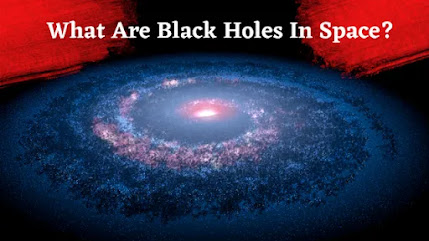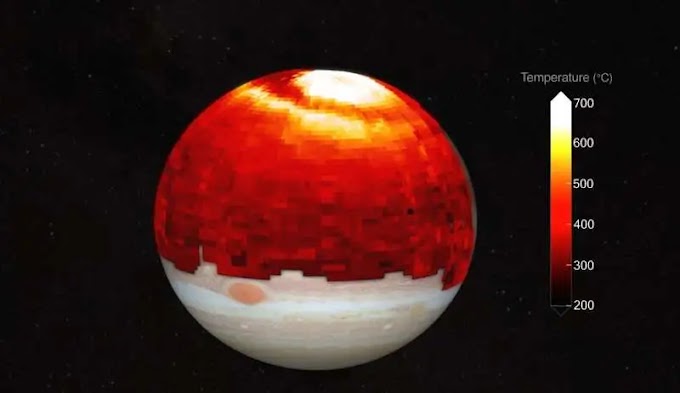Black holes are some of the most fascinating objects in space. But what exactly are they? In this blog post, we will explore what black holes are, how they form, and what happens when something falls into one. We will also dispel some common myths about black holes. So if you’ve ever wondered about these cosmic phenomena, read on!
What Are Black Holes In Space?
A black hole is a region of spacetime from which nothing, not even light, can escape. The theory of general relativity predicts that a sufficiently compact mass will deform spacetime to form a black hole. Around a black hole, there is a gravitational singularity, an infinitely dense point mass where the curvature of spacetime is infinite. Black holes are created when very massive stars collapse at the end of their life cycle.
During the star's lifetime, nuclear fusion in its core creates elements heavier than hydrogen and helium from lighter ones. Once the star runs out of fuel to fuse, it starts to collapse under its own gravity. The outer layers of the star are thrown off in a supernova explosion, but the core continues to collapse until it becomes extremely dense. If the core's mass is more than about three times the mass of our Sun , it will become a black hole.
The first thing to understand about black holes is that they're not really "holes" at all. A black hole is actually a region of spacetime with an incredibly strong gravitational field. Anything that comes too close to a black hole will be pulled in by its gravity and won't be able to escape.
So what happens if you find yourself unfortunate enough to fall into a black hole? Well, according to Einstein's theory of general relativity, you would experience something called "spaghettification."
How are black holes formed?
There are several ways that black holes can form, but most commonly they occur when a massive star dies. When a star runs out of fuel, it can no longer produce the energy needed to support itself and it collapses in on itself. If the star is massive enough, its gravity will be strong enough to overcome all other forces and it will continue to collapse until it forms a black hole.
What happens to matter when it enters a black hole?
When matter enters a black hole, it is pulled in by the gravitational force. The matter is then compressed and heated up as it falls towards the center of the black hole. Eventually, the matter reaches a point where it is so dense and hot that it becomes a plasma. This plasma forms a disk around the black hole, and as more matter falls into the black hole, the disk gets bigger and brighter.
What are the different types of black holes?
There are four different types of black holes: stellar, intermediate, supermassive, and miniature.
Stellar black holes are the most common type of black hole. They form when a massive star collapses in on itself at the end of its life. A typical stellar black hole has a mass that is about 3 times that of the Sun.
Intermediate black holes are larger than stellar black holes but smaller than supermassive black holes. They are thought to form when two stellar black holes merge together.
Supermassive black holes are the largest type of black hole. They have masses that are millions or even billions times that of the Sun. Supermassive black holes are thought to be at the center of most galaxies, including our own Milky Way galaxy.
Miniature black holes are the smallest type of black hole. They have masses that are much smaller than those of stellar or even intermediate blackholes. Miniature black holes could potentially be created in a laboratory setting, although this has not yet been successfully accomplished.
The Make-or-Break Launch of India's Aditya – L1 Mission to the Sun
Are there black holes in our Solar System?
Yes, there are black holes in our Solar System. But not the giant, all-consuming ones you might think of when you hear the word "black hole." The kinds of black holes we have in our Solar System are called "micro" or "mini" black holes.
These black holes are incredibly small and dense objects with a gravitational force so strong that not even light can escape from them. Scientists believe that micro black holes were created shortly after the Big Bang 13.8 billion years ago.
Some micro black holes may have been captured by the gravity of larger objects like stars or planets. Others may have been created when two stars collided and merged together.
There is evidence to suggest that there is a micro black hole at the center of our own Solar System. This could explain some strange phenomena like why certain planets orbit closer to the Sun than others, or why comets from the outer reaches of our Solar System never seem to return.
How Does Gravity Affect Black Holes?
Gravity is the force that attracts two masses to each other. It is what keeps you glued to the ground and what makes it difficult to jump off of a building. In space, gravity is what keeps planets in orbit around stars and what makes it possible for galaxies to exist.
The gravity of a black hole is so strong that not even light can escape it. This is because the mass of a black hole is concentrated in a very small space. The force of gravity gets stronger as an object gets closer to the center of a black hole.
Black holes are interesting objects in space because they have such a strong gravitational pull. Scientists are still trying to understand everything about them.
The secrets of Pyramid in Egypt
Conclusion
Black holes are one of the most fascinating objects in space. They are incredibly dense and have a powerful gravitational pull. Even light cannot escape from a black hole. Scientists are still trying to understand all of the properties of black holes. But they have already made some amazing discoveries!






0 Comments
I love to read your comments. Please comments